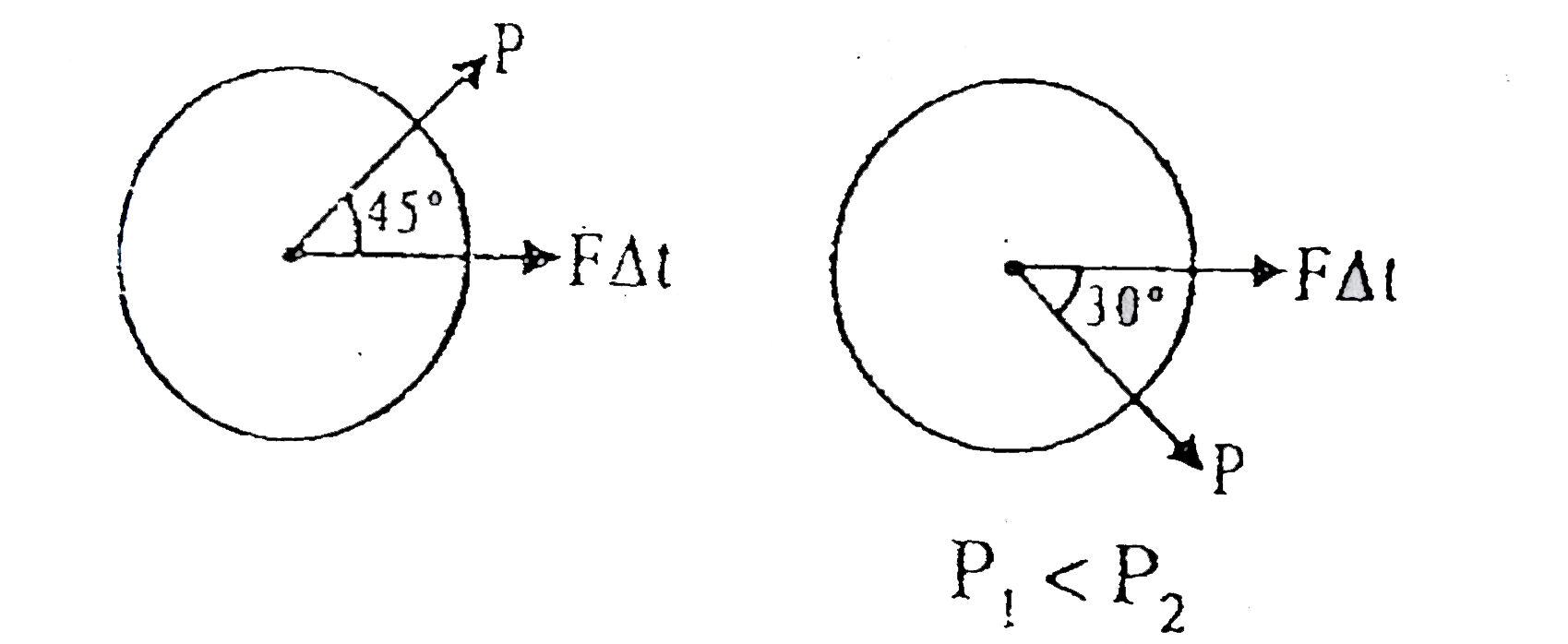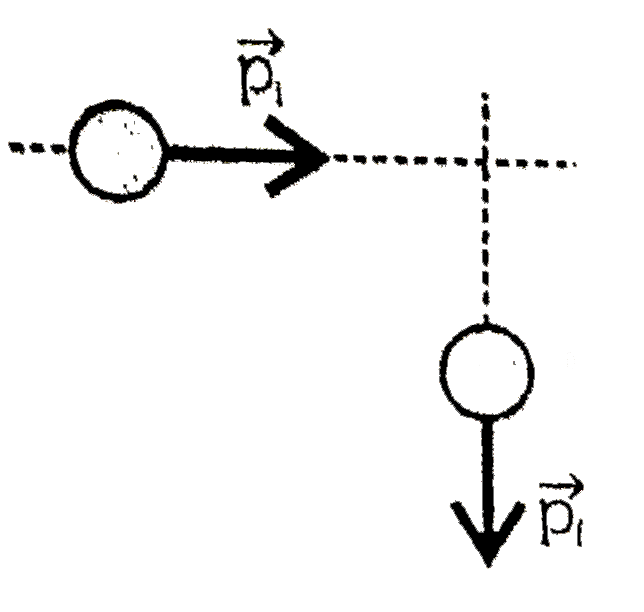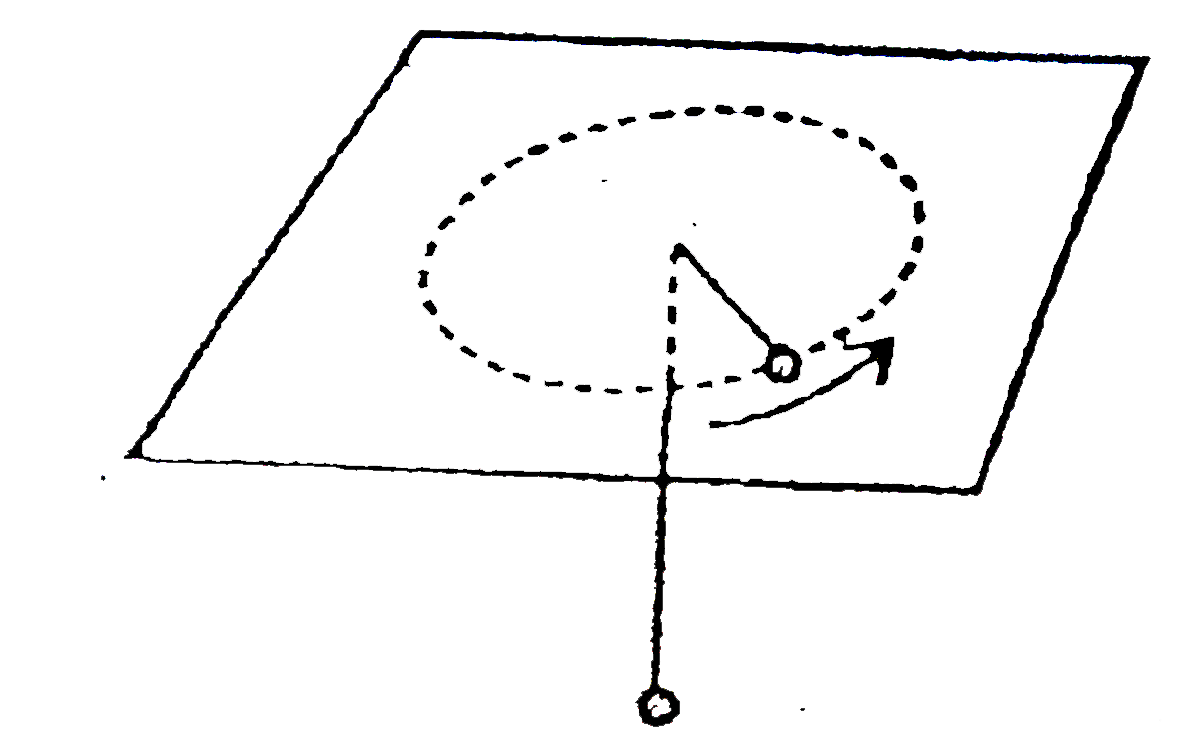Two pucks are initially moving along a frictionless surface as shown in the diagram. The pucks have mass m1<m2 and begin with equal magnitude of momentum. A constant force →F is applied to each puck direactly to the right for the same amount of nonzero time. After the pushes are complete, what is the relationship for the size of the moments of pucks (p1 and p2) ?
 Solution in Gujrati
Solution in Gujrati
P1<P2
P1=P2
P1>P2
More information about the masses, speeds, force and time are required to answer the question
The correct Answer is:A
P1<P2 
Topper's Solved these Questions
- BOOK - ALLEN CHAPTER - TEST PAPEREXERCISE - PHYSICS4videos
TEST PAPER
- BOOK - ALLEN CHAPTER - TEST PAPEREXERCISE - PHYSICS4videos
TEST PAPER
- BOOK - ALLEN CHAPTER - SIMPLE HARMONIC MOTIONEXERCISE - Example1videos
SIMPLE HARMONIC MOTION
- BOOK - ALLEN CHAPTER - TEST PAPER 1EXERCISE - PHYSICS11videos
TEST PAPER 1
Similar Questions
Choose the correct statement:
05:19View SolutionChoose the correct statement:
02:15View SolutionA rod with rectangular cross section oscillates about a horizontal axis passing through one of its ends and it behaves like a seconds pendulum, its length will be
03:20View SolutionWhy are electric field lines perpendicular at a point on an equipotential surface of a conductor ?
02:19View SolutionAn air puck of mass m_(1) is tied to a string allowed to revolved in a circle of radius R on a frictionless horizontal table . The other end of the string passes through a small hole in the centre of the table , and a load of mass m_(2) is tied to the string? The suspended load remains in equilibrium while the pack on the tabletop revolves. a. Find the tension in the string b. Find the radial force acting on the puck c. Find the speed of the puck d. Qualitaively describe what will happen in the monsion of the puck if the value of m_(2) is somewhat increased by placing an additional load on it. e.Qualitaively describe what will happen in the monsion of the puck if the value of m_(2) is instead decreased removing a part from the hanging load.
04:40View SolutionA small puck is sliding to the right with momentum →P1 on a horizontal, frictionless surface, as shown in figure. A force is applied to the puck for a short time and its momentum afterward is →Pf. Which lettered arrow shows the direction of the impulse that was delovered to the puck ?
 02:10View Solution
02:10View SolutionA puck of mass m is moving in a circle at constant speed on a frictionless table as shown in the figure . The puck is connected by a string to a suspended bob, also of mass m, which is at rest below the table. Half of the length of the string is above the tabletop and half below. What is the magnitude of the centripetal acceleration of the moving puck ? Let g be the acceleration due to gravity.
 07:51View Solution
07:51View SolutionA small puck of mass m asn velcity v slider along a horizonal plane. The puck meets a "hill " of mass 3 m and height h that can also move along the plane . The puck begins to slide up the " hill" [see fig 4E.4 (a)] . If the hill is initially at rest m what value of v provides for the maxium subsequent velocity us of the " hill " ? Assume that all surface are frictionless.
 02:41View Solution
02:41View Solutionदो वस्तुओ की गतिज ऊर्जाओ समान है। यदि इनके द्रव्यमान m1 व m2 तथा संवेग क्रमश: p1 व p2 हो तो अनुपात p1/p2 कितना होगा?
01:42View Solutionनिम्न में से किस एंजाइम में ताँबा पक सक्रियक के रूप में जुड़ा रहता है-
View SolutionA 0.25 kg puck is initially stationary on an ice surface with negligible friction. At time t = 0, a horizontal force begins to move the puck. The force is given by vecF=(12.0-3.00t^2)hati , with vecF in newtons and t in seconds, and it acts until its magnitude is zero. (a) What is the magnitude of the impulse on the puck from the force between t= 0.750 s and t = 1.25 s? (b) What is the change in momentum of the puck between t=0 and the instant at which F=0?
01:42View SolutionIn Fig. puck 1 of mass m_1 = 0.25 kg is sent sliding across a frictionless lab bench, to undergo a one-dimensional elastic collision with stationary puck 2. Puck 2 then slides off the bench and lands a distance d from the base of the bench. Puck 1 rebounds from the collision and slides off the opposite edge of the bench, landing a distance 2d from the base of the bench. What is the mass of puck 2?
05:41View SolutionDuring hockey practice, two pucks are sliding across the ice in the same direction. At one instant, a 0.18-kg puck is moving at 16 m/s while the other puck has a mass of 0.14 kg and a speed of 3.8 m/s. What is the velocity of the center of mass of the two pucks?
04:06View SolutionHere are examples of how to use Newton's second law for a quck when one or two forces act on it. Parts (a), (b), and ( c ) of Fig. 5-3 show three situations in which one or two forces act on a puck that moves over frictionless ice along an x axis, in one-dimensional motion. The puck's mass is m = 0.20 kg. Forces →F1 and →F2 are directed along the axis and have magnitudes F1=4.0 N and F2=2.0 N. Force →F3 is directed at angle θ=30∘ and has magnitude F3=1.0 N. In each situation, what is the acceleration of the puck ?
04:45View SolutionTwo bodies of different masses m1 and m2 have equal momenta. Their kinetic energies E1 and E2 are in the ratio
01:36View SolutionAn air puck of mass m_(1) is tied to a string allowed to revolved in a circle of radius R on a frictionless horizontal table . The other end of the string passes through a small hole in the centre of the table , and a load of mass m_(2) is tied to the string? The suspended load remains in equilibrium while the pack on the tabletop revolves. a. Find the tension in the string b. Find the radial force acting on the puck c. Find the speed of the puck d. Qualitaively describe what will happen in the motion of the puck if the value of m_(2) is somewhat increased by placing an additional load on it. e.Qualitaively describe what will happen in the motion of the puck if the value of m_(2) is instead decreased removing a part from the hanging load.
01:41View Solution

